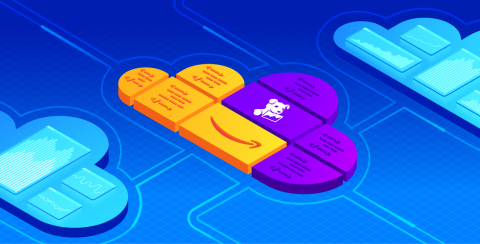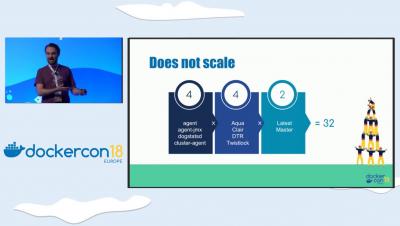Operations | Monitoring | ITSM | DevOps | Cloud
Datadog
2018 year in review
There were some big IT headlines this past year. Microsoft acquired GitHub and IBM bought Red Hat. Kubernetes graduated from the CNCF incubator program. And the biggest headline of all—at least to those of us at Datadog, where we live and breathe monitoring—we released Datadog Agent version 6, a completely new monitoring agent written in Go! As we start the new year, we’d like to take a moment to recognize some of the incredible things our engineers accomplished in 2018.
Join us in NYC for Dash 2019
We are thrilled to announce Dash 2019, the second year of Datadog’s conference on building and scaling the next generation of applications, infrastructure, and technical teams. This two-day conference will be attended by forward-thinking software developers and operations engineers who are taking the velocity, performance, reliability, and scale of their organizations to the next level.
Monitor all your CI pipelines with Datadog
With continuous integration becoming standard practice, getting full visibility into your CI pipelines has become a key part of monitoring and troubleshooting. Datadog gives you that visibility with out-of-the-box support for several continuous integration tools, including: GitLab, Jenkins, Travis CI, CircleCI and TeamCity. Monitoring your CI servers can help you identify bottlenecks in your pipelines.
Rethinking UX for AI-driven Alerting
I’ve been designing monitoring tools for almost 10 years now, and in that time a lot has changed. The infrastructure we build software on, for example, has been transformed multiple times—moving first from physical hosts to VMs in the cloud, then from VMs to containers, and now from containers to serverless and cloud service-based infrastructure.
Deploying and configuring Datadog with CloudFormation
In this post, we will show you how you can use AWS CloudFormation to automatically deploy infrastructure that is preconfigured to send metrics and logs to Datadog.
Building confidence via automated container security scanning - Xavier Vello - DockerCon EU 2018
Key metrics for monitoring Tomcat
Apache Tomcat is a server for Java-based web applications, developed by the Apache Software Foundation. The Tomcat project’s source was originally created by Sun Microsystems and donated to the foundation in 1999. Tomcat is one of the more popular server implementations for Java web applications and runs in a Java Virtual Machine (JVM).
Collecting metrics with Tomcat monitoring tools
In Part 1 of this series, we discussed some key Tomcat and JVM metrics that are exposed through Java Management Extensions (JMX). Now that you are familiar with metrics necessary for monitoring Tomcat, we can look at how to collect and query that data.
Analyzing Tomcat logs and metrics with Datadog
In Part 2 of this series, we showed you how to collect key Tomcat performance metrics and logs with open source tools. These tools are useful for quickly viewing health and performance data from Tomcat, but don’t provide much context for how those metrics and logs relate to other applications or systems within your infrastructure.











